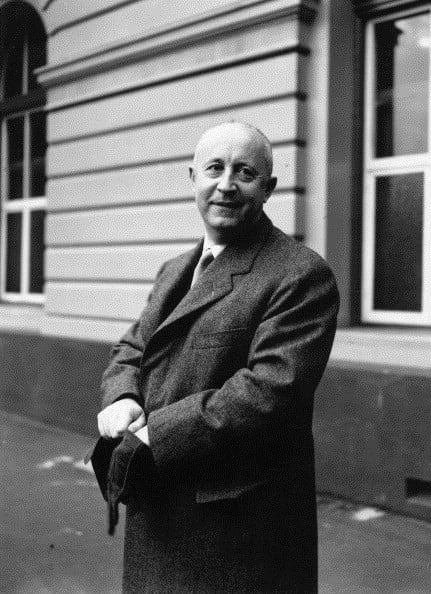Christian Dior at a Glance
Christian Dior’s Net Worth and Legacy: A Fashion Icon’s Life
Introduction: The Dior Dynasty
Christian Dior, a name synonymous with elegance, luxury, and groundbreaking fashion, left an indelible mark on the world. While his net worth at the time of his death in 1957 was reported to be $10 million, his true legacy transcends monetary value. This article delves into the life and career of Christian Dior, exploring his early influences, the genesis of his iconic fashion house, the revolutionary “New Look,” and his lasting impact on the world of haute couture. His brand is currently owned by Bernard Arnault’s LVMH. In 1946, he founded his fashion house on December 16.
Early Life and Artistic Beginnings
Born on January 21, 1905, in Granville, France, Christian Dior’s early life was shaped by a privileged upbringing and a burgeoning artistic sensibility. He was the second of five children born to Maurice Dior, a successful fertilizer manufacturer, and Madeleine Martin. The family’s relative affluence allowed them to move to Paris when Christian was five, though summers were still spent in the coastal town of Granville. Initially, Dior’s family envisioned a diplomatic career for him. However, his creative talents surfaced early, particularly his flair for drawing and design.
At a young age, Dior began expressing his artistic inclinations. He began selling fashion sketches for a small sum. In 1928, with financial support from his father, Dior opened a small art gallery where he showcased works by prominent artists such as Pablo Picasso and others. The gallery thrived for a few years before closing due to the financial strain of the Great Depression.
Career Rise: From Sketches to Couture
Dior’s journey into the world of fashion began in 1937 when he was employed by Robert Piguet, a renowned fashion designer. During his time at Piguet, Dior designed three collections, including the well-received “Café Anglais” design. It featured a full skirt. He also worked alongside Pierre Balmain, another rising star in the fashion world.
Dior’s career was briefly interrupted by military service. After his time in the army, he joined Lucien Lelong’s fashion house, where he and Balmain became the primary designers. He continued working for Lelong throughout World War II. During the war, Dior, along with other designers, designed clothes for the wives of Nazi officers and French collaborators to keep the French fashion industry afloat. This controversial practice was an attempt to keep the French fashion industry alive during wartime. At the same time, Dior’s sister, Catherine, was involved in the French Resistance. She was captured and sent to a concentration camp, where she remained until May 1945. In 1947, Dior paid tribute to his sister by naming his debut fragrance “Miss Dior.”

Edward Miller/Keystone/Getty Images
The “New Look” and Fashion Revolution
In 1946, Dior received an invitation from Marcel Boussac, one of France’s wealthiest men, to design for Philippe et Gaston, a Parisian fashion house. After initially declining, Boussac agreed to back Dior in creating his own fashion house. On December 16, 1946, the House of Dior was officially established. Dior’s first collection, presented on February 12, 1947, was named “Corolle.” However, it was the editor-in-chief of “Harper’s Bazaar,” Carmel Snow, who coined the term “New Look” to describe Dior’s revolutionary designs.
The “New Look” was a dramatic departure from the utilitarian styles of the wartime era. It featured:
- A full skirt with a cinched waist.
- Rounded shoulders.
- A return to a more feminine silhouette.
Dior’s designs often incorporated bustier-styled bodices, hip padding, corsets, and petticoats, creating a curvaceous and elegant form. While initially met with some criticism due to the amount of fabric used, especially in the post-war era of rationing, the “New Look” quickly gained popularity and transformed women’s fashion. It also reestablished Paris as the global center of fashion after World War II.
Dior released new lines every year. Some lines included the Envol line, the Mid-Century line, the Naturelle line, the Tulipe Line, and the Fuseau line. In 1955, he was honored at the 1955 Academy Awards for Best Costume Design in black and white for the “Terminal Station” directed by Vittorio De Sica.
Later Career and Lasting Legacy
In 1955, Dior hired the young Yves Saint Laurent as his assistant. In 1957, Dior met with Yves Saint Laurent’s mother. He told her that Saint Laurent would succeed him at Dior. Tragically, this would prove to be the case. Following his death, Dior’s legacy continued to grow. In 1967, he was nominated for a BAFTA for Best British Costume for the “Arabesque.”
Dior’s impact on fashion extends far beyond his lifetime. His designs continue to inspire designers today, and the House of Dior remains a dominant force in the luxury fashion industry. Dior was known for creating masterful shapes and silhouettes.
Personal Life and Death
Throughout his life, Christian Dior maintained a discreet personal life. He had several male lovers. At the time of his death in 1957, he was in a relationship with Jacques Benita, a singer. Dior died of a sudden heart attack while on vacation in Montecatini, Italy, during a game of cards at the young age of 52. His early death cut short a brilliant career, but his influence on fashion is undeniable.
/**/
Conclusion: Dior’s Enduring Influence
Christian Dior’s life was a testament to the transformative power of design and the enduring appeal of elegance. From his early artistic endeavors to the groundbreaking “New Look” and the establishment of his iconic fashion house, Dior’s career was a series of triumphs. Though his life was cut short, his legacy continues to shape the fashion industry, inspiring designers and captivating audiences around the world. His name remains synonymous with luxury, innovation, and timeless style. The fashion world, and women, owe much to Dior’s genius.

